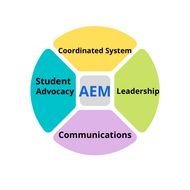Determining the Need for AEM
(View Complete Item Description)Who Needs AEM? If a student is... unable to read or use grade level materials at a sufficient rate and with adequate comprehension to complete academic tasks with success relative to same-age peers or cannot do this independently or across environments or tasks, then the student may need AEM. For example, students with visual impairments may not be able to see a textbook, students with physical disabilities may not be able to turn a page, and students with learning disabilities whose decoding abilities are significantly below grade level may require support - all these students may require AEM. Contact the AT & AEM Center to discuss your student's need
Material Type: Primary Source




















